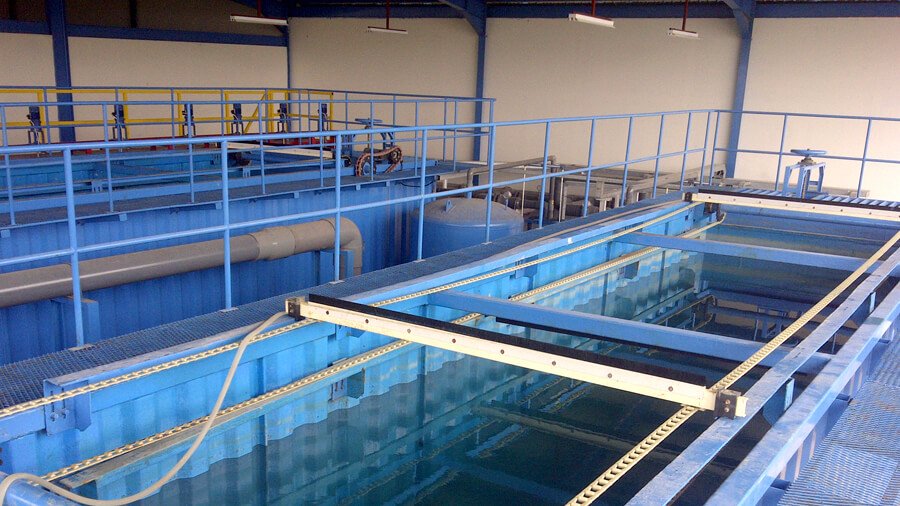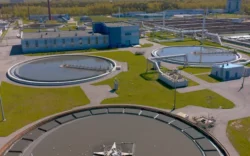High-Pressure Membrane Systems: Revolutionizing Water Treatment and Separation Technologies
Introduction
In today’s rapidly evolving environmental landscape, high-pressure membrane systems have emerged as essential tools for addressing water scarcity, pollution, and treatment challenges faced by municipalities and industries alike. These innovative systems leverage advanced filtration techniques to deliver cleaner water, enhance efficiency, and meet stringent regulatory expectations. For professionals involved in water treatment—be it plant operators, municipal directors, or design engineers—understanding the intricacies of high-pressure membrane systems is crucial. How do these technologies work, and what potential benefits do they bring to the table?
Understanding High-Pressure Membrane Systems
Definition and Mechanism of Action
High-pressure membrane systems utilize a semi-permeable membrane that separates contaminants from water under high pressure. Typically employed in processes such as reverse osmosis (RO), nanofiltration (NF), and ultrafiltration (UF), these systems are characterized by their ability to efficiently remove particulates, salts, and other impurities from water. The driving force behind these systems is hydraulic pressure, which forces water molecules through the membrane, leaving behind larger molecules and ionic species.
Types of Membrane Technologies
-
Reverse Osmosis (RO):
- Mechanism: Uses extremely fine membranes to remove up to 99% of dissolved salts and larger organic molecules.
- Applications: Drinking water treatment, seawater desalination, and wastewater recycling.
-
Nanofiltration (NF):
- Mechanism: Has a permeability between RO and UF, effectively removing divalent ions while allowing monovalent ions to pass through.
- Applications: Softening hard water, partial desalination, and removal of color and organics.
- Ultrafiltration (UF):
- Mechanism: Filters out particles as large as 0.01 microns while allowing smaller molecules and ions to pass through.
- Applications: Water purifying processes, wastewater treatment, and surface water treatment.
Advantages over Traditional Methods
High-pressure membrane systems possess several advantages when compared to conventional water treatment methods:
- Efficiency: These systems require less energy for operation versus thermal processes (e.g., distillation).
- Space-Saving Design: Compact units can be strategically installed in existing facilities without extensive infrastructure changes.
- Versatility: Capable of handling various feed water sources from surface water to seawater, making them suitable for diverse applications.
The Regulatory Landscape in 2025
Current Regulations Impacting Membrane Technology
As of 2025, agencies such as the Environmental Protection Agency (EPA) have emphasized stricter regulations surrounding water quality and safety. The latest guidelines advocate for advanced filtration technologies to meet higher standards for contaminants like PFAS (per- and polyfluoroalkyl substances) and microplastics. Industry analysis from 2024 shows that these developments have led to a substantial uptick in the utilization of high-pressure membrane systems for compliance.
Technology Advancements Driven by Compliance Needs
Due to evolving regulations, manufacturers have increasingly focused on enhancing membrane materials’ durability and performance. Innovations such as novel polymer blends and anti-fouling coatings have emerged, allowing membranes to operate effectively in harsher conditions. The EPA’s guidance supports these advancements, encouraging research and development in membrane technologies to mitigate environmental and health concerns.
Impact on Water Quality and Treatment Efficiency
Case Studies: Success Stories in Implementation
Desalination Projects
The Arabian Gulf region exemplifies the successful application of high-pressure membrane systems in large-scale desalination projects. Utilizing reverse osmosis technology, facilities are now producing millions of gallons of potable water daily, significantly alleviating water scarcity issues in arid nations.
Industrial Water Recycling
In California, multi-national corporations have adopted high-pressure membrane systems to reclaim wastewater for industrial processes. By implementing these systems, businesses have reported up to 80% reductions in freshwater consumption, demonstrating the economic viability of technology solutions.
Performance Metrics
Research findings suggest that modern high-pressure membranes can achieve rejection rates of up to 99.5% for certain contaminants, raising overall water quality. Their modular design also allows for scalability, making it feasible to meet fluctuating demand without compromising service quality.
Challenges and Solutions in High-Pressure Membrane Systems
Membrane Fouling
One of the most persistent challenges in high-pressure membrane systems is membrane fouling, a process where particles build up on the membrane surface, reducing its efficiency. However, industry experts are continuously innovating:
-
Pre-Treatment Strategies: Implementing coagulation and flocculation techniques can significantly lower fouling potential by reducing suspended solids before they reach the membrane.
- Cleaning Protocols: Regularly scheduled chemical cleanings with appropriate agents can help restore membrane performance.
Cost Considerations
Initial capital costs for high-pressure membrane systems can be significant. However, the long-term savings on energy and operational efficiencies often offset these initial investments. Additionally, technologies such as energy recovery devices are enhancing the cost-effectiveness of RO systems by recovering energy from the pressurized brine stream.
Future Trends and Innovations
Advancements in Membrane Materials
Research trends indicate a shift towards developing more sustainable materials, such as bio-based membranes, which aim to reduce the environmental footprint of membrane production. These innovations could lead to broader adoption across various sectors seeking to improve their sustainability.
Automation and Digital Integration
The incorporation of IoT (Internet of Things) in water treatment plants is also on the rise. Sensors can monitor membrane performance in real-time, providing valuable data for predictive maintenance and optimization.
Integration with Renewable Energy Sources
Finally, there is a growing interest in integrating renewable energy sources, such as solar or wind power, with high-pressure membrane systems. This approach can minimize reliance on fossil fuels and contribute to overall sustainability efforts in water treatment.
Conclusion
High-pressure membrane systems are critically poised to transform the water treatment sector. With advancing technologies, regulatory support, and a clear focus on sustainability, these systems offer a viable path to address the pressing challenges of water scarcity and contamination. For stakeholders in the water industry, understanding and embracing high-pressure membrane systems is not just an option—it is an imperative for ensuring sustainable water solutions for the future.
By following this framework, professionals can navigate the complexities of high-pressure membrane systems effectively, ensuring that we meet the needs of today without compromising the resources of tomorrow. Whether you are an operator in the field, an engineer in design, or a municipal leader, these systems will play a crucial role in shaping the future of water treatment.
source https://www.waterandwastewater.com/high-pressure-membrane-systems/



No comments:
Post a Comment